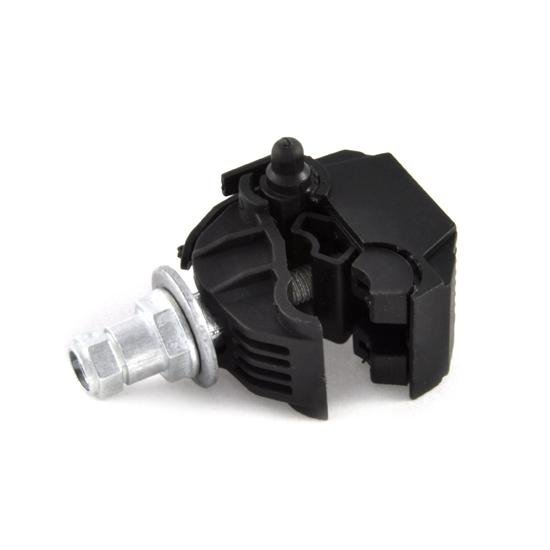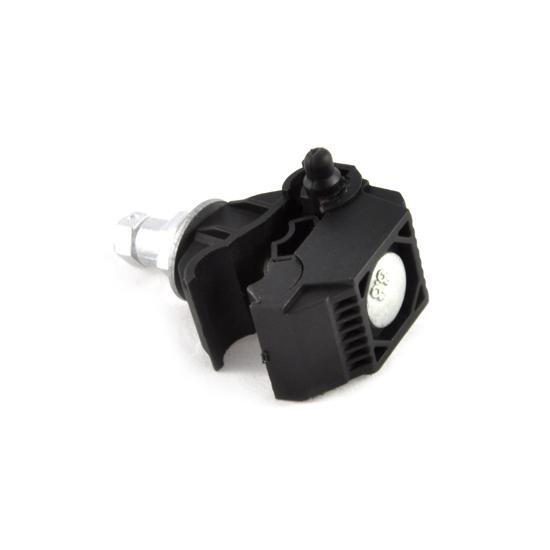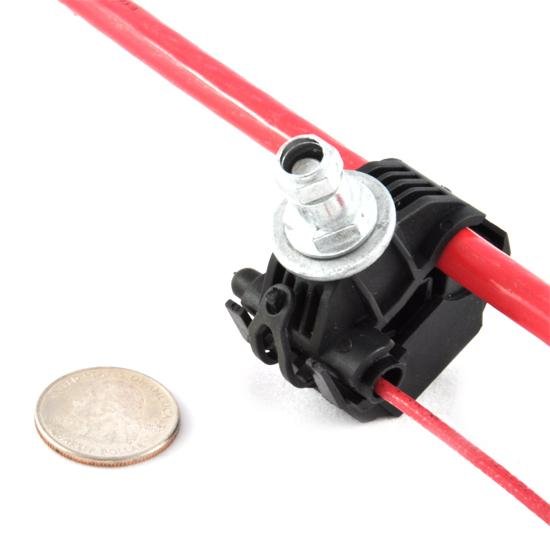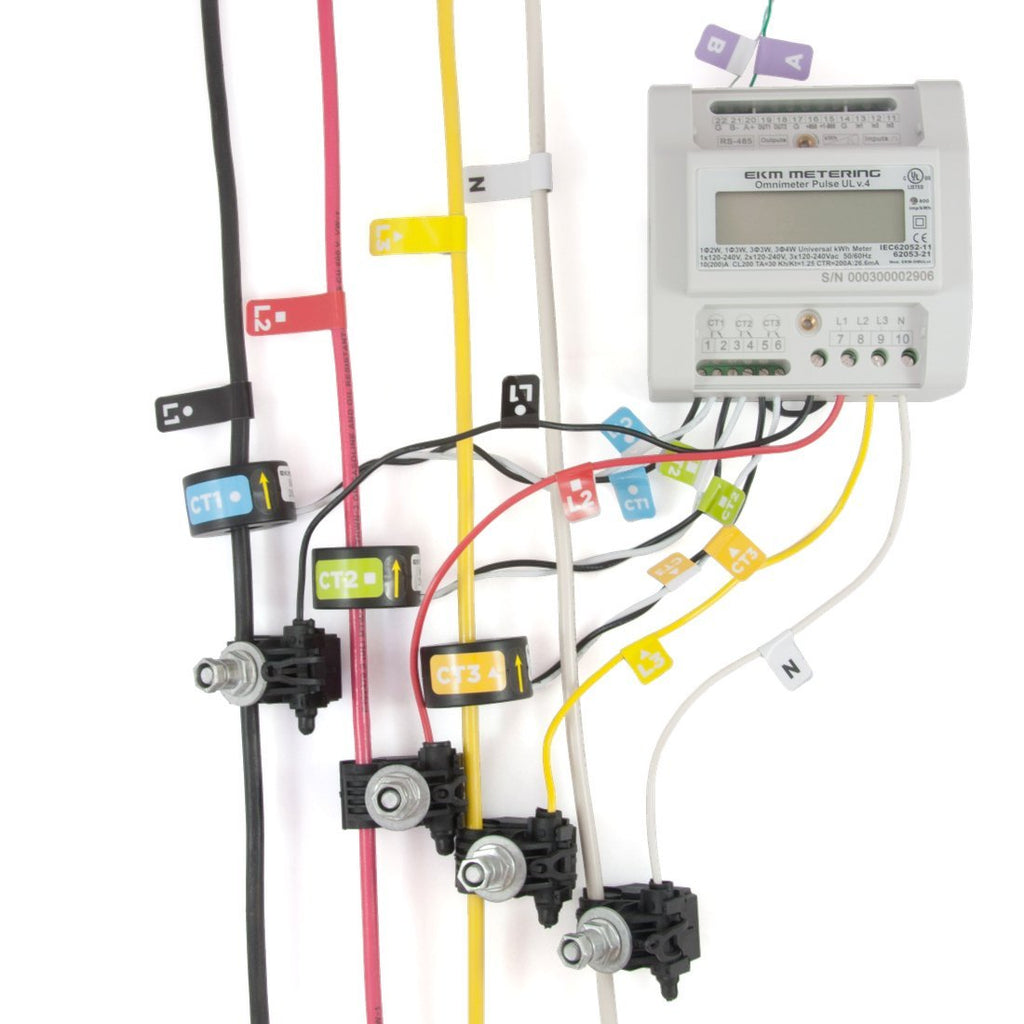EKM Insulation Piercing Connector
View More
More information
Function: Tap a small wire off of a large wire
Primary Wire Size: #6 to 4/0 wire
Secondary Wire Size: 14 to 10 AWG
Model: EKM-IPC
A convenient and fast way to safely and securely tap off of an existing line. You can tap off of the middle a line that is from #6 gauge wire to 4/0 cable to feed a 14 AWG to #10 AWG wire. You do not have to cut or interrupt the main line.
Install with the power shut off to the main line. Use a 10mm socket or end wrench to tighten the sheer nut until it sheers off, at which point the primary wire insulation should be pierced and the main and secondary wires should have continuity. This video explains the installation process for piercing connectors:
This is not a required item for an Omnimeter installation. It is only used if you do not have a free breaker or convenient place to tap your voltage reference wires off of.
We have developed an alternative to this item called the Piercing Split Core Current Transformer. The Piercing CT, combines the functionality of the Insulation Piercing Connector, with a Current Transformer.
Offered as a convenience for our Omnimeter customers only. Please only purchase these if you are also buying other items.
For more information about our products and services, we encourage you to visit our online Knowledge Base, which provides spec sheets, videos, tutorials, FAQs, diagrams, and more.




